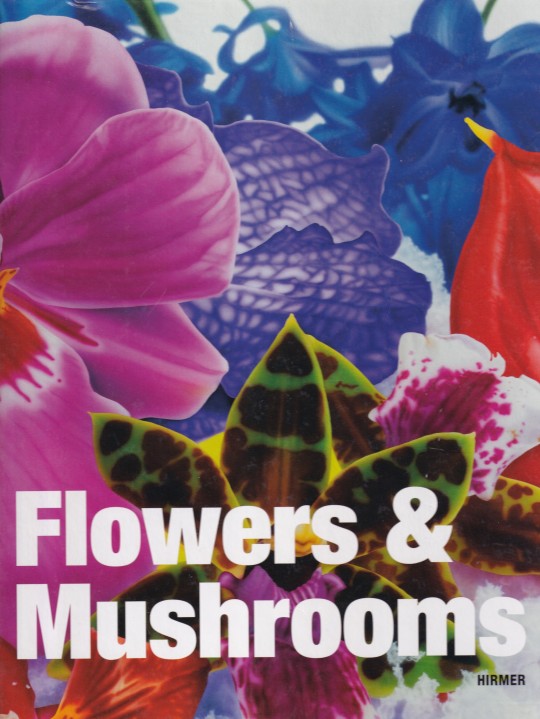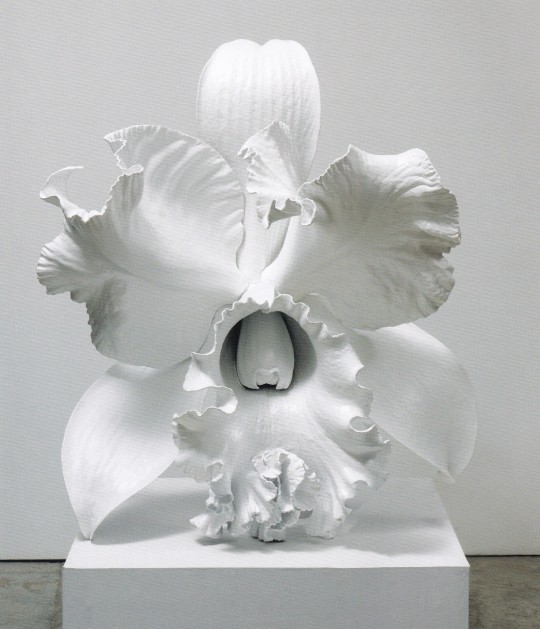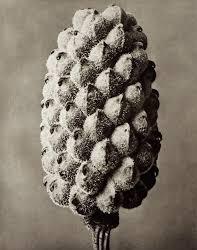#Blossfedt
Text












Flowers & Mushrooms
Essays by M. Harder, M. Moschik, T. Teufel, P. Weiermair, V. Ziegelmaier et al.
Hirmer Verlag, München 2013, 256 pages, 24x28,5cm, ISBN 9783777421605
euro 40,00
email if you want to buy [email protected]
Flowers and Mushrooms takes readers inside the rich and diverse symbolism of its eponymous subjects. Flowers have at times stood for freshness and fertility, transience and death. In addition to its ubiquitous and much-maligned image as a hallucinogen, the mushroom has throughout history signified health and life and served as an important symbol within religious ritual. In recent years though, flowers and mushrooms have become a focus in contemporary art, with artists manipulating the many clichés that surround them and adapting their representation to produce new and unexpected layers of meaning, from social criticism to feminism and the conceptual framework of the erotic. Among the leading plant portraitists are the Swiss duo Peter Fischli and David Weiss, whose series of forty photographs epitomize the potential to shed new light on familiar objects by presenting them in unusual context.
The exhibition at MdM Museum der Moderne - Salzburg presents works from Nobuyoshi Araki, Anna Atkins, Eliška Bartek, Christopher Beane, Karl Blossfeldt, Lou Bonin-Tchimoukoff, Balthasar Burkhard, Giovanni Gastel, Georgia Creimer, Imogen Cunningham, Nathalie Djurberg, Hans-Peter Feldmann, Peter Fischli/David Weiss, Sylvie Fleury, Seiichi Furuya, Ernst Haas, Carsten Höller, Judith Huemer, Dieter Huber, Rolf Koppel, August Kotzsch, David LaChapelle, Edwin Hale Lincoln, Chen Lingyang, Vera Lutter, Katharina Malli, Robert Mapplethorpe, Elfriede Mejchar, Moritz Meurer, Paloma Navares, Nam June Paik, Marc Quinn, Albert Renger-Patzsch, Zeger Reyers, Pipilotti Rist, August Sander, Gitte Schäfer, Shirana Shahbazi, Luzia Simons, Thomas Stimm, Robert von Stockert, William Henry Fox Talbot, Diana Thater, Stefan Waibel, Xiao Hui Wang, Andy Warhol, Alois Auer von Welsbach, Michael Wesely, Manfred Willmann, Andrew Zuckerman.
07/03/24
#Flowers & Mushrooms#exhibition catalogue#MdM Museum der Moderne - Salzburg 2013#Araki#Blossfedt#Gastel#Fischli/Weiss#LaChapelle#Mapplethorpe#Sander#Warhol#Haas#Nam Jun Paik#photography books#fashionbooksmilano
12 notes
·
View notes
Photo

Sans-titre. 2003.
D’après les photographies de Karl Blossfeldt. Dessin au stylo Rotring sur papier. Drawing with pen Rotring on paper. Format : 45 x 65 cm.
2 notes
·
View notes
Text
Vision and Technology: Walter Benjamin and the optical unconscious
Rosalind Kraus’ book ‘ the optical unconscious’ doesn’t mention Benjamin much, she didn’t like, or seem to want to make sense of his writings on the optical unconscious.
Fraud - There’s conflict between the conscious ego and the subconscious Id.
Ref - Leni Rienfenstahl, triumph of the will, 1934. Each individual is not concious of their overall surroundings but the camera can show this - the optical unconscious.
Ref - August Sander - optical unconscious showing how German society is structured and categorised.
Benjamin - Neues von Blumen (News about flowers) 1928. A review of Blossfedt’s book of plant photographs. Contains a theme that reappears in his later works. He believes in the ‘transformation of human perception’ and that society is changing in the ways we see the world.
Emmanuel Kant - Our senses receive information from everything outside from us. Space and time are components of our mind so we know nothing about what’s outside of our mind, therefore past, present and future may not actually exist. In Kant’s theory, space is 3 dimentional and time is one dimensional. (Transcendental idealism)
Banjamin claims that Kantian forms are changing. Photography reveals entirely new things that our brain didn't know, therefore participating in the ongoing transformation of human perception.
Ref - Benjamin’s little history of photography - introduces the optical unconscious.
Portrait photography is different to painting as the artist and model can't change what he consciously wants to do. Photography therefore reveals secrets and can be contrary to what we believed before.
Ref - Eadweard Muybridge, the horse in motion, 1878.
Ref - Karl Dauthenday with his fiancé. 1857. The woman is looking into ominous distance. Benjamin sees what is to come (she later committed suicide). Photography almost allows him to see into the future. Retaining the presents so we in the future can go back and look with hindsight. Time for Benjamin therefore isn't necessarily one dimensional.
Ref - Harold Edgerth, golf swing. 1938
Aura of an object = the unique appearance or semblance of distance, no matter how close the object may be. Benjamin thinks photography destroys this. Aura is due to the objects function and vanishes in reproduced pieces of art.
0 notes

